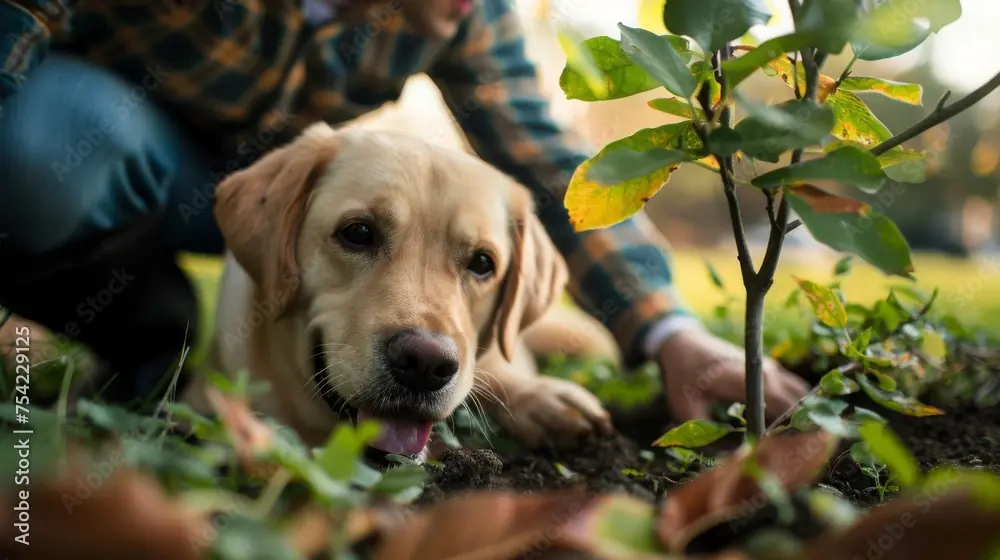
How to Reduce Your Dog’s Carbon Footprint: 10 Eco-Friendly Tips for Sustainable Pet Care
As more of us become aware of our own environmental impact, it is essential to consider the carbon footprint of our furry friends tooFigures from June 2023 reveal that an average-sized dog produces 530kg of CO2-equivalent emissions annually. With that in mind, here are ten tips for reducing your dog’s carbon footprint. Or pawprint!
Understanding Your Dog’s Carbon Footprint
What is a Carbon Footprint?
A carbon footprint measures total greenhouse gases produced by human activities, usually expressed in equivalent tonnes of carbon dioxide (CO2e). This includes everything from the energy used in producing dog food, to emissions from travelling with your pet.
How Pets Contribute to Carbon Emissions
Pets, especially dogs, can have a significant impact on the environment because of their diet, waste, and the products we buy for them. By making mindful choices, we can reduce this footprint and help the planet.
How To Make Eco-Friendly Choices For Your Dog
Benefits of Sustainable Dog Food
Traditional dog foods often contain ingredients sourced through environmentally damaging processes. Opting for sustainable dog food made on British farms (like ours!) means choosing products with responsibly sourced ingredients and minimal packaging. Being British, the products also typically have lower carbon emissions as they have less distance to travel overall from farm to feeding.
Making your own dog food can be both eco-friendly and healthier for your pet. Consider recipes with local, organic ingredients such as chicken, vegetables, and rice. Ensure your homemade meals are balanced and meet your dog’s nutritional needs. Don’t forget to give them occasional treats too!
Opt for Sustainable Pet Toys
Many pet toys are made from plastic, which harms the environment. Eco-friendly toys are typically made from sustainable materials such as hemp, organic cotton, or recycled materials.
When shopping for new toys, aside from choosing what toys your dog won’t destroy in two minutes, keep an eye out for those made from natural rubber, hemp, organic cotton, or recycled plastics. These materials are biodegradable or recyclable, reducing landfill waste when they eventually meet their end at the mercy of your pooch.
Environmental Impact of Traditional Waste Bags
As owners, we can go through hundreds of waste bags, which, if plastic, can take hundreds of years to decompose. Switching to biodegradable bags can significantly reduce this impact as they break down faster than regular plastic. Compostable bags go a step further, transforming waste into nutrient-rich compost.
Eco-Friendly Grooming Products
Did you know, standard grooming products can contain harmful chemicals and non-recyclable packaging? On your journey to sustainable pet care, opt for natural, organic shampoos and conditioners that are safe for the environment and your dog.
There are also DIY options for grooming products that are often just as effective and much kinder to the environment. You can make these from products in your kitchen such as:
Baking soda
Apple cider vinegar
Aloe Vera Gel
Uncooked Oatmeal
Cornstarch
Sustainable Collars and Leashes
Choose collars and leashes made from sustainable materials like hemp or recycled PET bottles. These options are durable and have a lower environmental impact. We’ve all been there when a lead frays or a collar snaps, but another way to reduce waste and your dog’s carbon footprint is to invest in high-quality accessories that last longer, reducing the need for frequent replacements.
Eco-Friendly Pet Services
If you need to use a doggy daycare or are looking to use a kennels while you are away, look for places that use sustainable pet care practices, such as eco-friendly cleaning products and energy-efficient lighting. Green Pet Hotels and similar services are becoming more common.
All pets need a vet at some point, and there is a lot of waste typically associated with keeping things sterile. There are vet practices across the country that are working towards paperless records and reducing clinical waste – so make sure to ask questions when registering.
Reduce, Reuse, Recycle Pet Supplies
Upcycling Old Dog Items
Everyone loves to be comfy, and our pets are no exception. Instead of buying new beds, you can get creative by upcycling old blankets into dog beds, reducing waste and giving a second life to items you might otherwise throw away.
How to Donate or Recycle Unused Pet Supplies
It is always heartbreaking to lose our four-legged friends, but you can honour their memory by recycling pet items or donating to rescues who are always grateful for any donations they can use to make their dogs more comfortable. Not only does this reduce your beloved pet’s carbon emissions, but it also helps pups in need who don’t have the regular home comforts of our pets.
Items accepted often include:
Unopened and in date dog food
Unopened and in date treats
Toys and teddies (without beady eyes!)
Bedding, blankets, and duvets
Towels
Puppy pads and newspaper
Leads, harnesses, and collars
Brushes
Bowls
Crates and dog buggies
Minimise Carbon Emissions from Pet Travel
Alternatives to Car Travel
When travelling with your dog, use public transport or carpool as much as possible to reduce emissions. It may take a bit more planning, but there are routes to most places that minimise travel distance. You should also consider walking or cycling with your dog for local trips as it is great exercise and reduces your carbon footprint.
Carbon Offsetting for Pet Travel
If you must travel by car or plane, you should consider signing up for carbon offset programmes and schemes that invest in environmental projects to balance your emissions. These projects often offset emissions through planting trees, renewable energy, carbon-storing farming practices, and waste and landfill management – all great reasons to get involved for you and your dog!
Conclusion: Making a Positive Impact Together
Reducing your dog’s carbon footprint is a rewarding journey that benefits both the environment and your pet. By adopting these eco-friendly tips, you can make a significant difference. Small changes, like choosing sustainable dog food or using biodegradable waste bags, have a big impact.
Let’s work together towards a greener future for all.
For more ideas, visit our blog, where our team has been delving deeper into ways you can be an environmentally friendly dog parent throughout July.
Let us know if you’ve made any of these changes! We’d love to hear from you on Instagram or Facebook.





